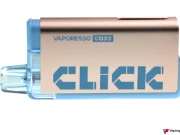The research team from Penn State university split the participants in 4 groups. The first group to use a 36 mg/ml vape, the second 8 mg/ml vape, the third a nicotine-free vape and the forth another kind of NRT (nicotine replacement therapy), and instructed to decrease their smoking by 75% at 1 month. Follow up checks were conducted at months 1, 3, and 6.
The research team found that all the the three groups given vapes reported less dependence on cigarettes at all follow up visits, than the group given the NRT. The participants in the 36 mg/ml e-cigarette group reported a greater dependence on vapes than the other groups at 6 months, however there were no differences in total nicotine exposure compared to baseline, nor between any conditions. In view of these results, the researchers concluded that vaping was associated with reduced cigarette dependence without increases in nicotine consumption.
Vapour causes less cellular damage than smoke
Meanwhile, another recent study published on Wiley Analytical Science, found that vapour does not produce the same negative cellular effects caused by cigarette smoke that lead to vascular damage.
Titled, “Comparative assessment of electronic nicotine delivery systems aerosol and cigarette smoke on endothelial cell migration: The Replica Project,” the study replicated a previous one in comparing the in vitro the effect of e-cigarette vapour in comparison to cigarette smoke.
Consistent with the findings from the original study, the research team found that the aerosol from vaping products caused less cellular damage than cigarette smoke. “While cigarette smoke reduced endothelial wound healing ability already at low concentrations (12.5%) and in a concentration-dependent manner, EC and HTPs aerosol showed no effect on endothelial cells until 80%–100% concentrations.”
New PHE Data Shows Record Drop in Traditional NRT Use by Quitting Smokers



![Recent Conference Urged Nations Worldwide to “Quit [Smoking] Like Sweden”](https://www.vapingpost.com/wp-content/uploads/2024/04/vape-conference-238x178.png)




![Recent Conference Urged Nations Worldwide to “Quit [Smoking] Like Sweden”](https://www.vapingpost.com/wp-content/uploads/2024/04/vape-conference-180x135.png)



